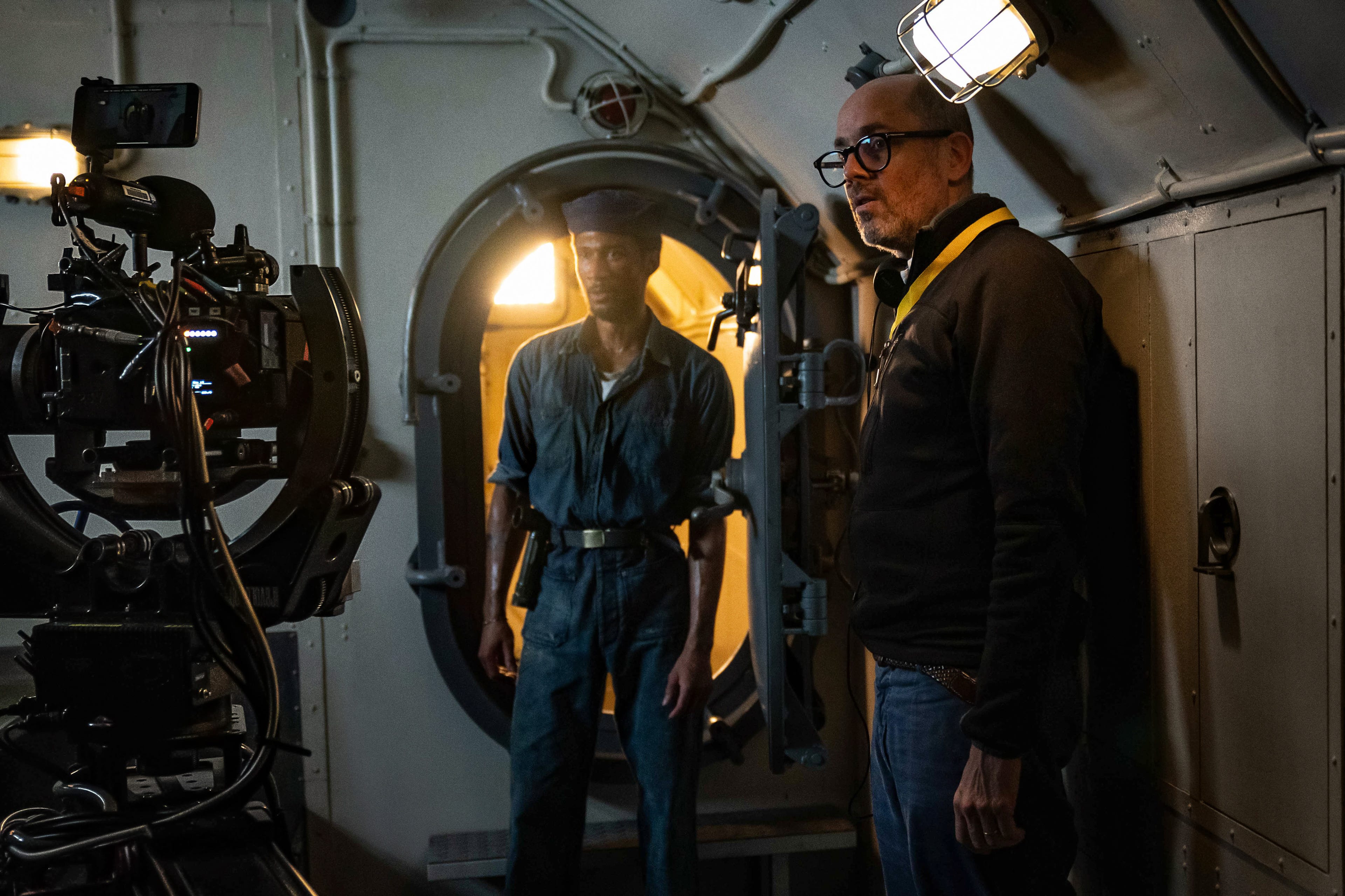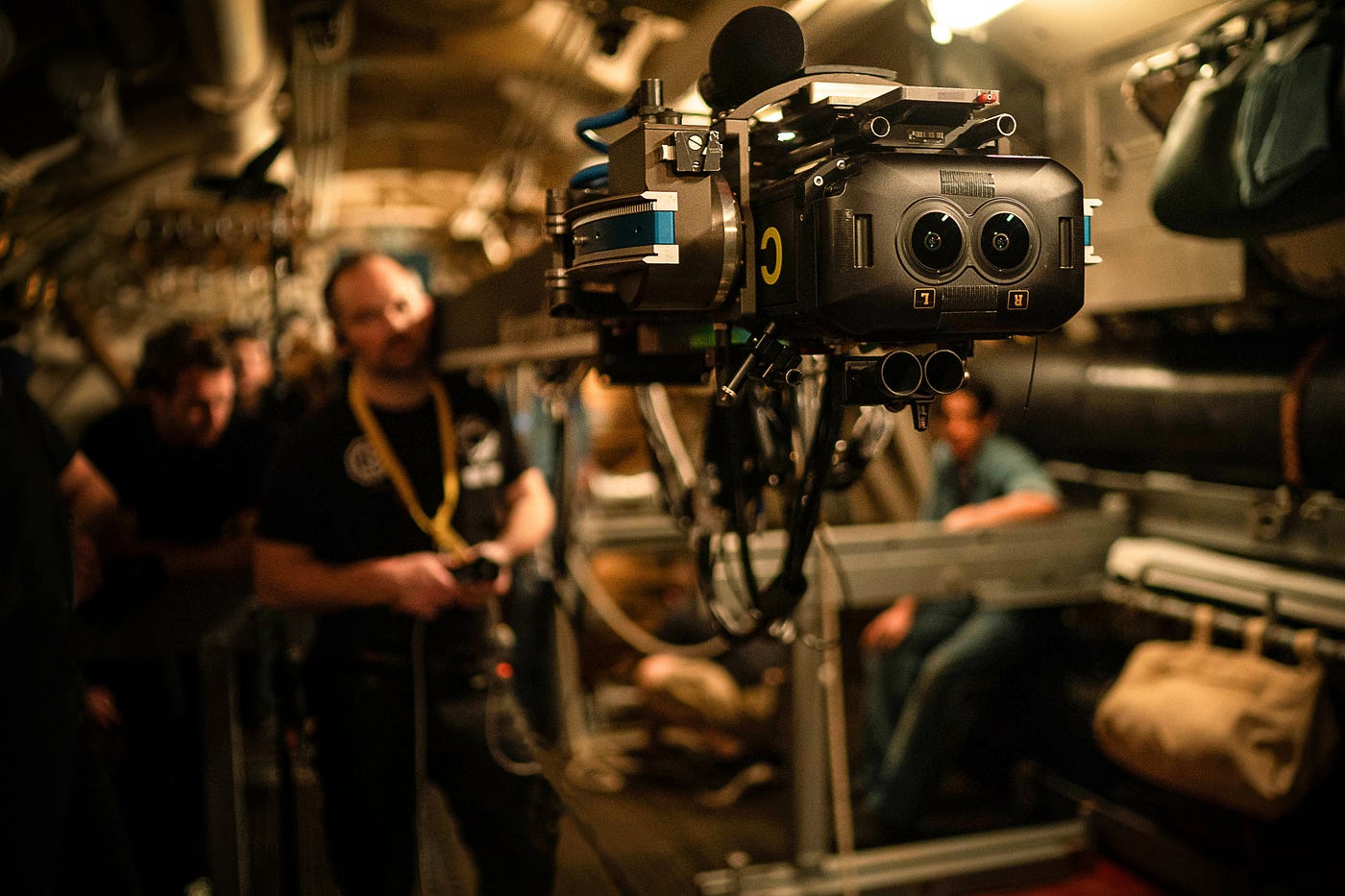Go Close-Up With A Vision Of Immersive Media’s Future With The New Apple Release ‘Submerged’…
Academy Award-winning filmmaker Edward Berger zigs where others have zagged with the first narrative short made for Apple’s Vision Pro


The close-up.
Inarguably the greatest cinematic invention this side of editing in the long line of cinematic inventions. A simple technique that elevated the act of capturing plays into an art form all its own. Thanks to the close-up, cinema is a form that is even more intimate than it is epic, even when operating at the grandest of scales.
When filmmakers first began making immersive media, 180 and 360-degree filmed productions alike, the close-up was relegated to a lesser tool on the palette. This was thanks to a pair of puzzles inherent to immersive video. The first being: what’s the point of having an XR device where the audience can peer around the environment if you don’t stage things in a way that show off the setting?
The second is the fact that many of the cameras that have been used for this work haven’t quite been up to the task of capturing an actor’s face at the level of fidelity that recreates the feeling of being nose to nose with them.
With Submerged, written and directed by Academy Award-winning filmmaker Edward Berger (All Quiet on the Western Front, Conclave) has managed to do exactly that with an exclusive production for the Apple Vision Pro platform that relies on Apple’s in-house Apple Immersive Video cameras.
The result is apparent right from jump, as a series of shots that hyperfocus on details inside the torpedo room of the WWII submarine that we will find ourselves trapped in for the next 17 minutes set the stage. There’s no grand vistas here, instead, we lean into a sense of claustrophobia. By the time the camera pulls back a touch and lets us meet character James Dyson (Jordan Barton), the sailor who will be our point of view character for the film, a palpable sense of physical tension has built up.
To Berger’s credit we’re given time with the foot off the gas before the promise of the premise — that we’re running silent in enemy waters, fused to the perspective of the hapless souls who load the torpedos, sleeping next to their destructive charges — is brought to bear.
What’s glorious is the how of it all. The camera gets right up in Barton’s face. His sweat, his pores, his every microexpression. All lensed and presented with a level of fidelity I haven’t seen before. The closeness compels us to soak in the details. The images attain a kind of hyperreality, but this isn’t a side effect of VFX, most of what we see is captured fully in camera. Practical lighting effects cleverly give us emotional tones, and large parts of the scenes stay in full focus even once the action gets underway.
Get Noah J Nelson’s stories in your inbox
Join Medium for free to get updates from this writer.
SubscribeSubscribe
Apple spent a lot of money to make this short and have it look this good. The submarine set was built out of metal and weighed in at 23 tons. A behind the scenes short shows artisans fitting brass pipes into the fixtures. Why? Because plywood and paint wouldn’t read as true on the pixel-rich Vision Pro screen.

For the runtime of the short I was fairly rapt, and even though this was a 180 affair I didn’t find myself missing a full 360 view thanks to the way that Berger and cinematographer James Friend leaned into the strengths and the limitations of that form. That included smartly using Spatial Audio to cast elements off-screen and behind us. It’s always a thrill to watch a talented director play with the edges of the tools without breaking them completely. Submerged stands as one of the tightest immersive films I’ve had the pleasure to witness.
It also appears that it won’t be alone for long. Apple has plans to roll out more original narrative and documentary shorts — we’ll talk about length in a moment — and on the day I saw Submerged I also got a preview of the work Apple is doing with the NBA. Footage captured by the same Apple Immersive Cameras used on Submerged as part of the 2024 NBA All-Star Weekend really shined. The footage created that same sense of witnessing something hyperreal, which is a feeling I associate most with truly spectacular stage productions or that one time I got to watch three innings of the World Series through the chain link fence at PacBell Park. (I don’t care what that baseball stadium is called now, for the record. It will always be PacBell to me.)
The time I spent watching all this meant that when I took the Vision Pro off I found myself hyper-aware of how the natural lighting of the Apple campus in Culver City was framing the faces of those around me. As if I was carrying over the conscious lighting design choices made by the filmmakers into the real world. It’s a way of thinking that I imagine is how cinematographer’s brains work all the time.
Speaking of time: Submerged is short. And I don’t expect us to be getting feature-length productions made expressly for this format anytime soon. The fidelity that can be produced by the Vision Pro, which while at the high end of the spectrum is kind of table stakes for a mixed reality/spatial computing future, demands a higher level of production design. Making believable spaces requires believable materials, and that drives production costs up. This means that immersive video makers are quickly finding themselves in the same resolution arms race that AAA video game makers have.
This isn’t just true of the Vision Pro, but of venues like the Sphere and Cosm as well. Maybe this is all part of the death spiral of the feature-length film. Words I don’t relish typing because I LIKE the feature-length film as a unit of storytelling. Yet there’s also more than a little to be said about how much can be done with a cinematic short. Any dedicated film festival goer will tell you that. I’d be pretty happy if we end up with a solid slate of cinematic immersive shorts bankrolled by Apple that hit a high bar of quality.
I can’t say for certain that’s our sure future, but there’s a lot more tools in the kit for media makers and a whole lot of craft knowledge that has been built up in the last decade. What we need now are some hits.
To that end Apple is rolling the dice, having announced a slate of programming today that includes the aforementioned 2024 NBA All-Star Weekend short, a concert series dubbed Concert for One, which is using the same tech and gets to lean into Apple’s ties to the music industry, and the series Adventure and Elevated. The total is a mix of scripted and documentary that offer up something for all kinds of tastes. I suspect that the sports and concert materials will create the most converts to immersive video, but the real connoisseurs will be clamoring for more narrative, and we can only hope that the other directors Apple have on deck are as willing to toy with the form as Berger is with Submerged.
Discover the latest immersive events, festivals, workshops, and more at our new site EVERYTHING IMMERSIVE, home of NoPro’s show listings.
NoPro is a labor of love made possible by our generous Patreon backers. Join them today and get access to our Newsletter and Discord!
In addition to the No Proscenium website and our podcast, and you can find NoPro on Bluesky, Facebook, LinkedIn,YouTube, Instagram, and in the Facebook community also named Everything Immersive.